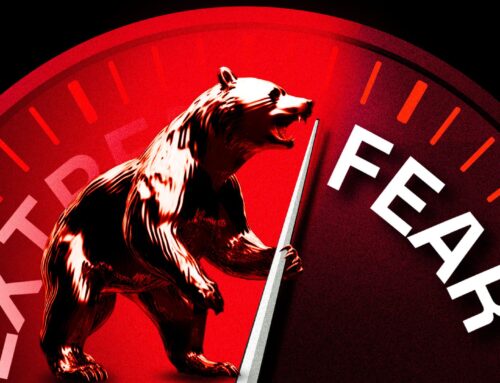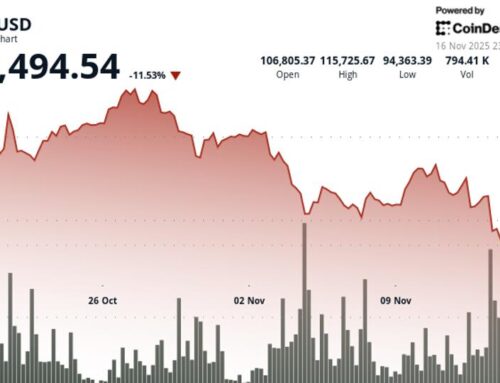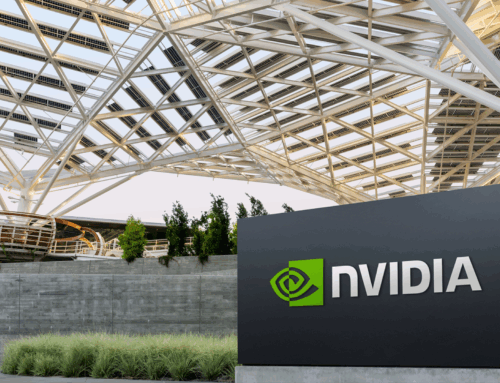Why the ‘Year of Magical Investing’ will end, and which stocks are safe
November 16, 2025
The bounce. Oh, the bounce. Real? Fake? Invitation to your financial funeral? Or the opportunity to buy the best of the megacaps at cheaper prices? Somehow that’s how the debate has been framed. It’s so unfortunate because the real Achilles Heel of this market has nothing to do with the great data center buildout, something that’s such a necessity because we have no other way to house these infernal machines — infernal infernos. It has far more to do with rank speculation that must be quelled before we go any higher. We have had a two-pronged selloff in the last two weeks. One involved the spike in the price of Oracle debt insurance and the ill-advised “backstop” comments made by OpenAI CFO Sarah Friar. The other? The endless apotheosis of nuclear alternatives to natural gas, quantum alternatives to graphics processing units – or GPUs, the artificial intelligence gold standard – and all sorts of one-offs involving self-driving adjacencies and, most egregious, all sorts of entities that look like data center buildout but have much more to do with ingenious, levered bitcoin scams that by any other name other than 21st century regulation. The first one fooled me. I believed that if Oracle co-founder Larry Ellison and then-CEO Safra Catz were willing to borrow tens of billions of dollars for Oracle’s participation in the serial industrialization of data centers, then it made sense as a line of business for the slow-growing software company. Why not? It had tried health care records with Cerner only to find that the $28 billion acquisition made just three years ago seems like a bust already. So, why not just pivot to building standardized data centers at scale? No one else was doing it. No one else has the balance sheet to do it. Larry is elusive. He’s become a visible Howard Hughes, only piping up on the conference call. But what about Catz? Perhaps the most boisterous, some would say “boosterish,” albeit rigorous CEO, I have ever met. Don’t be fooled by her sometimes teenage-like excitement. She’s hard-nosed and brilliant, and you are hearing pride in that voice and strength. I never, ever wanted to be on the wrong side of Catz in any endeavor. When she announced the bones of the gigantic buildout scheme — one accentuated in grandeur by Larry — and then appeared on “Mad Money” to flesh it out, I went from skeptic to convert. If Catz is in, then I am in. This week, we found out from some great, unheralded reporting in the Financial Times that Catz quit because of the gigantic expense of the buildout. Her resignation, with no explanation beyond, “it was time,” is now seemingly the silent alarm signaling danger, imprudence, and a balance sheet, carefully attended to all these years, not hefty enough to do the job. On Sept. 22, Oracle stock was at $328. That’s the date I should have realized I was on the wrong side of the buildout. Of course, I like everyone else who watched the stock run after Oracle announced on Sept. 9 that it had $455 billion in remaining performance obligations, should have been more skeptical. Not for one but two reasons. First, $355 billion of that RPO came from OpenAI – and second, OpenAI doesn’t have the money, even as we always regard RPO as “money in the bank but not yet reportable” for those who declare it. But who was I to doubt Catz? Now, I wonder, has the whole narrative changed? Whatever money I thought OpenAI might have to pay Oracle might not be as easy to find. It didn’t help that Oracle did a $18 billion bond offering on Sept. 26, multiple tranches 2030 to 2065. But there is such a thing as being too skeptical. We never heard the qualms from Catz directly. And, the stock held in at $328. That static stock price led me to believe I could be too skeptical of OpenAI’s side of the trade. They have all sorts of money coming their way. Softbank, and Club names Microsoft and Nvidia — can you get a better list than that? The $355 billion RPO would be no problem, right? OpenAI also had the totally bankable CFO, Friar, another one of those executives that you would take a bullet for because she’s so damned rigorous. You doubt her, and I will send you an invitation to your funeral. Nevertheless, the bonds were soon trading poorly. The credit default swaps (CDS), insurance on the bonds, started spiking. Something’s wrong. Then on Nov. 5, at an incredibly visible, decidedly not off-the-record forum, The Wall Street Journal’s Tech Live Conference, Friar dropped a 2,000-pound bombshell filled with TNT. She intimated that there could be a backstop to OpenAI if things went awry. It was such a colossal warhead that the interlocutor sensed a scoop but wanted to be sure. She asked again for clarity. Friar used the backstop term again. Sure, she “walked it back” – whatever the hell that meant — in a posting soon after. But the words stung and stuck. Wowza. Now we had the truth: Catz didn’t endorse the grand Oracle plan, and Friar was ready for President Donald Trump to rescue them if things went awry anyway, and the $355 billion could be a chimerical RPO. The CDS jumped higher. Never a good sign. Oracle’s stock, which had been slipping, then dropped to $248 after Friar’s ill-advised comments, almost exactly where it was before the RPO figure was announced. The huge gain after the RPO announcement was gone. Throughout 2025, I had been proclaiming this the “Year of Magical Investing.” But it was time to be more circumspect, and I said so on air. It was noted, and repeated, by the network because I had been a proponent of such many of the red-hot names, and I could no longer be so. How could I stay so enchanted? Catz was out; Friar was “confident,” but for a very bad reason. The first pillar, the OpenAI war chest, may not be so bankable after all. Almost immediately, the government didn’t seem all that desirous of playing the backstop roll. OpenAI wasn’t a fortress, wasn’t impregnable. The second pillar to topple, obliterating the “Year of Magical Investing,” revolved around the actual build-out of one key portion of the data center, the part taken care of by a shrewd outfit called CoreWeave. This bitcoin mining company had morphed into a data center builder, and a great one at that. The only problem? It had so much work that it had subcontracted to another company called Core Scientific. Last week, we learned that when CoreWeave reported that Core Scientific ‘s portion of the build, five separate gigantic sites, weren’t finished on time, causing CoreWeave to miss quarterly estimates. Core Scientific, a failed full-time digital miner that had resuscitated itself in a 2024 bankruptcy to become a full-time digital data miner and progenitor, couldn’t get the job done in time. CoreWeave tried to buy Core Scientific during the quarter and failed to do so. Did CoreWeave try to buy Core Scientific because it was worried about the tardy projects? We may never know. But it sure wasn’t because Core Scientific was ahead of schedule. Now, we know it all. Oracle may not be getting paid to build sites because it would stretch its balance sheet. OpenAI might need federal money to pay for its data centers, which it desperately needs because it is growing like a weed. And, CoreWeave, the expert manager of data centers, is running late with its product. There’s nothing magical at all. The whole time this raucous era rocked on, we saw every company involved with bitcoin, with data center building, with alternative energy, and with quantum computing to power and outpace Nvidia and Advanced Micro Devices GPUs — oh, and don’t forget, the rise of AMD’s GPUs by leaps and bounds. I was OK with that. After all, we had two years of booming initial public offerings (IPOs) before the year 2000, when it all came apart. The crucial underpinning of the 1998-1999 era was the cash that was needed and its endless source — the individual investor, new to the game and quite ignorant of the process. The endless source started drying up at the end of 1999 – overwhelmed by seconcondaries, convertible bonds, and insider selling. Individuals, often conned by unrealistic companies with no revenue and barely a business plan, didn’t have enough money to keep financing all of this junk. And, that era of “Magical Investing,” one that included the ill-fared offering of TheStreet – hey, at least we survived — came to a horrendous, humiliating, and scandalous ending. I had held out as positive during this era – all of the companies involved were paying with cash. Not debt. No insider selling. No fancy convertibles. But in the last few months, the indebted, like CoreWeave, started surfacing. The endless parade of bitcoin/quantum/alternative energy companies was beginning to run out of money. They are now furiously financing. All sorts of stocks and junk bonds. And the insiders? They have now begun to blow out of their holdings. Too many of them to list here. The end of the era of “Magical Investing” was becoming obvious to others, and we had the hellacious early part of last week with a nice bounce toward the end. Phew, now we are all caught up. With the table set, the question that must be asked: Is the bounce sustainable? Yes, if OpenAI reveals its money. Yes, if the speculative detritus comes to a quick end. Yes, if the individual investor gets out of the stocks of companies that, like in 2000, have no hope of a profit. The good news: There are many companies involved in the data center buildout that are real, rich, and can afford to keep building, although hopefully at a slower pace. The bad news: We just started the unwind, and most individuals seem oblivious that the “Year of Magical Investing” is over. I think the crack in bitcoin will be the best tell. You’ll get a nice bounce in all of these hopeful companies if we see bitcoin run, and you will get a chance to get out of the profitless and switch to the profitable. There is urgency, though, only to the former, not the latter, because few are going to bother distinguishing now from 2000 when the failures begin. There’s still enough money around for everyone, but not at this pace. Has the whole complex become uninvestible? No. Should some profits be taken? We are taking some from the sector and applying it to others. I think you should, too. Ultimately, I am a believer in the need for data centers. OpenAI, with its 800 million users, growing like a weed, will keep building, betting the money is there to pay everyone. I am concerned that it’s largely a business-to-consumer story that could tap out anytime as opposed to, say, Anthropic, which is a much more reliable business-to-business service. That’s where the money will ultimately be — machines talking to machines. The big boys, the megacaps, with the exception of Club name Apple , will have to keep building out. Apple will be a taker. If you want its 1.5 billion user base, you will have to pay them as Google does now for search. If Alphabet shares were ever to come down, I swear we will buy it back, but it never does because it’s making so much money away from all of this. You can see the money pour out of shares of Meta Platforms because of its gargantuan commitment to data spend. But I believe that will go down dramatically if OpenAI doesn’t challenge the social vertical. That’s why I would buy Meta, also a portfolio holding, right here. We did last Monday . In 2000, we did not have a seamless transition to Club name Bristol Myers or Coca-Cola , although at least we had one, one month from the peak in the Nasdaq. Last week, we saw a nascent attempt at transition. Watch the retailers, which report earnings this week, and the banks – both of which will tell us the health of the market. Fortunately, if you believe, like me, that we will get another interest rate cut from the Federal Reserve, we might actually pull this whole thing off. The Fed meets next month. But, the whole thing will not include bitcoin derivatives, quantum computing – other than IBM and Alphabet – alternative energy like nuclear power, as it takes too long no matter what they say, and anything else that came public this year that has little hope for profit. Just follow the trail of equity offerings, convertible bonds, and insider selling, and you will know what the score is. Look, in the end, it had to end. It was just too bountiful. Now, it’s Humpty Dumpty time for the pseudo players. Fortunately, there are enough stocks away from that limerick, that we can still make money. All I can say is that it was sensational while it lasted. But don’t think for a minute that Oracle’s getting back to $328 – and if you need a wake-up call, may I suggest that, until OpenAI comes public – and it better be real soon — Oracle is the best tell of the future. Boy, I hope I am wrong. We should know, at least in a couple of weeks. It rolled over really quickly, from the last week of February to the third week of March, in the year 2000. This time will be no different for the outrageous merchandise, but then we only had Amazon. Now we have Amazon , which we love, and a lot of others. Nvidia reports earnings this week, which will be key to the market. That’s the good news. The bad news? The individual investor must pivot out of the potential catastrophes and stay with the tried and true – as long as they, too, don’t ruin their balance sheet with too much investing. (Jim Cramer’s Charitable Trust is long MSFT, NVDA, AAPL, META, AMZN. See here for a full list of the stocks.) As a subscriber to the CNBC Investing Club with Jim Cramer, you will receive a trade alert before Jim makes a trade. Jim waits 45 minutes after sending a trade alert before buying or selling a stock in his charitable trust’s portfolio. If Jim has talked about a stock on CNBC TV, he waits 72 hours after issuing the trade alert before executing the trade. THE ABOVE INVESTING CLUB INFORMATION IS SUBJECT TO OUR TERMS AND CONDITIONS AND PRIVACY POLICY , TOGETHER WITH OUR DISCLAIMER . NO FIDUCIARY OBLIGATION OR DUTY EXISTS, OR IS CREATED, BY VIRTUE OF YOUR RECEIPT OF ANY INFORMATION PROVIDED IN CONNECTION WITH THE INVESTING CLUB. NO SPECIFIC OUTCOME OR PROFIT IS GUARANTEED.
Search
RECENT PRESS RELEASES
Related Post




